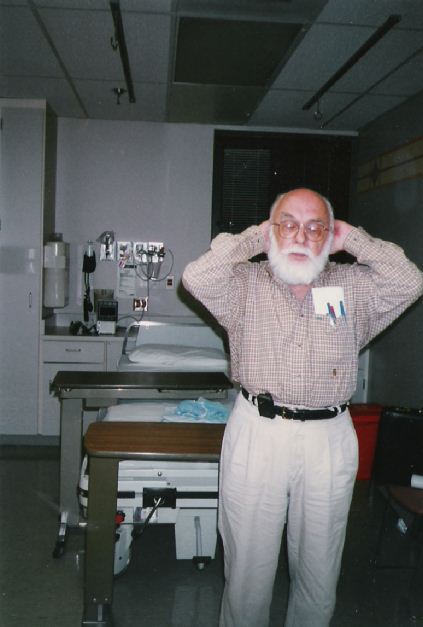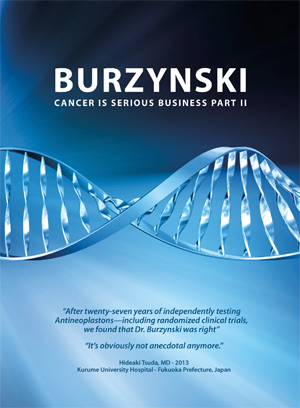HIV Denial in the 21st Century
- Details
- Written by Dr. Steven Novella
- Category: Swift
- Hits: 10814
It must be tough to be an HIV denier these days. Back in the 1980s HIV was just being discovered and researched. The connection to the acquired immune deficiency syndrome (AIDS) quickly became clear, but the early treatments (remember AZT) were minimally effective.
One of the primary arguments of those who, for various reasons, decided to deny the connection between HIV and AIDS (or even the existence of HIV), was that anti-HIV treatment was ineffective in preventing or treating AIDS.JREF and PhACT Issue Challenge to "Therapeutic Touch" Practitioners
- Details
- Written by D.J. Grothe
- Category: Swift
- Hits: 14051
The James Randi Educational Foundation (JREF) in association with the Philadelphia Association for Critical Thinking (PhACT) formally issues its $1 Million Challenge to any Therapeutic Touch Practitioner (TTP) who can detect the Human Energy Field (HEF).The test will be held April 20, 2013 in Philadelphia at the Franklin Institute, one of America's leading hands-on science centers.
 Randi at the Therapeutic Touch challenge in 1997.
Randi at the Therapeutic Touch challenge in 1997.
A success in this simple, direct, test could provide evidence for and would justify the continued existence and promotion of both Therapeutic Touch (TT) and the Energy Field Disturbance Nursing Diagnosis (EFD).
The existence of the Human Energy Field (HEF) is the entire basis of the “energy based therapy” known as Therapeutic Touch (TT). TT was created, and has been promoted as science, by the Nursing profession since the 1970's, which has claimed it is supported by Quantum Mechanics and research published by the National Center for Complementary and Alternative Medicine (NCCAM).
Read more: JREF and PhACT Issue Challenge to "Therapeutic Touch" Practitioners
Putting Quacks, Scams, and Shams on the Ropes
- Details
- Written by Thomas Donnelly
- Category: Newsflash
- Hits: 7264

// DON’T MISS OUT!
![]() Do not wait! Tickets are selling fast and registration prices will increase after March 31. We are expecting over 1,000 attendees again this year and if we fill up will be forced to close registration.
Do not wait! Tickets are selling fast and registration prices will increase after March 31. We are expecting over 1,000 attendees again this year and if we fill up will be forced to close registration.
"Burzynski II" Fails to Convince
- Details
- Written by Brian Thompson
- Category: Swift
- Hits: 15673
 I saw director Eric Merola’s new documentary Burzynski: Cancer is Serious Business, Part II. I wish I could take the film as seriously as I take the lives and livelihoods of cancer patients.
I saw director Eric Merola’s new documentary Burzynski: Cancer is Serious Business, Part II. I wish I could take the film as seriously as I take the lives and livelihoods of cancer patients.
Dr. Stanislaw Burzynski operates the Burzynski Clinic, a cancer treatment center in Houston, Texas. Dr. Burzynski claims to have discovered a deficiency of peptides he calls “antineoplastons” in many cancer-afflicted people. Since the mid-’90s, he’s conducted a series of clinical trials hoping to cure cancer by administering these antineoplastons to patients.
Many doctors, scientists, and public health advocates have criticized Dr. Burzynski for not publishing any randomized, controlled trial results in peer-reviewed medical journals. The FDA admonished the Burzynski Clinic for advertising its unproven therapies as effective cancer cures. Antineoplaston treatments are also very expensive, often costing patients $7,000 to $9,500 per month for several months of therapy.
Burzynski: Cancer is Serious Business, Part II (hereafter abbreviated to Burzynski II) takes a three-pronged approach to defending the clinic and its methods. First, Merola interviews several cancer victims who seem to have come away from the Burzynski Clinic with positive results after mainstream oncologists told them they had only weeks or months to live. Second, Burzynski II blames Dr. Burzynski’s inability to establish a foothold for his experimental treatments in the medical establishment on pharmaceutical companies who have taken over the FDA. According to the film, the FDA is a corrupt organization willing to suppress any breakthrough cancer treatment that may be less profitable than established drugs, surgeries, chemotherapies, and radiation. Finally, Merola paints the clinic’s public and private critics as an organized cabal of evil schemers who delight in the deaths of cancer victims.
Score One for the Good Guys
- Details
- Written by D.J. Grothe
- Category: Swift
- Hits: 15222
In the sometimes exhausting daily slog of fighting relentless nonsense belief, it is good to just stop and acknowledge the good work skeptics can accomplish. Skepticism is motivated not just by a desire to be right but to do good, to help people avoid the harm of unfounded belief. Tim Crookham of North Texas Skeptics recently had a minor victory as a “citizen skeptic” in this regard. Here’s Tim giving the details:
accomplish. Skepticism is motivated not just by a desire to be right but to do good, to help people avoid the harm of unfounded belief. Tim Crookham of North Texas Skeptics recently had a minor victory as a “citizen skeptic” in this regard. Here’s Tim giving the details:
On Saturday, March 9th, I went down to the Perot Museum of Nature and Science. It's a new museum that opened in Dallas in December of 2012.
At the end of my visit I stopped by the gift shop. While looking around the museum store, I saw a necklace in a box with the words "Titanium Sport Energy Necklace" printed on the box. It looked like the braided necklaces I’ve seen baseball players wear. I picked up the box and the description on the back read something like "works with your body's energy field to increase energy and promote well-being." It also had things like "good for those with back pain and poor circulation". I've seen enough Randi talks, Penn & Teller B.S. shows, and Richard Saunders clips that the skeptical alarm bells were ringing loud and clear. I was both shocked and disappointed that this found its way into the museum. I tried to find an employee to tell, but the store was packed.
I went back to the store the next day and talked to an employee and the store manager and told them this necklace was pseudoscience and doesn’t belong in the museum. They told me that the buyers for the store are in California and that they would pass along my concern. They were nice, but didn't seem to understand that this was not a good thing to have in a science museum. I went home and drafted an email to the museum in which I included some web links such as one from sciencebasedmedicine.org regarding the unscientific nature of the product. I remembered Eugenie Scott saying that it's important to copy knowledgeable people and organizations on emails and the two that came to my mind were the JREF and the Skeptic Society. I also copied the museum's PR director since the email address for the museum was just a generic info@ email address. Below is my email:
Dear Perot Museum Representative,
I came across some alternative medicine pseudoscience being sold at the Perot Museum Store and was shocked and disappointed. The item that caught my attention was the Titanium Sport Energy Necklace. This item claims to work with the body's energy field to increase energy and promote health. There is no scientific evidence to support those claims. As a member of the Perot Museum, I request that Titanium Sport Energy Necklace and any other pseudoscientific merchandise be removed from the museum store so as to align the store with the scientific mission of the rest of the museum. Below are articles regarding energy necklaces and their lack of scientific support.
http://www.sciencebasedmedicine.org/index.php/pseudoscience-sells/#more-15791
http://www.cbsnews.com/2100-500368_162-4525964.html
http://www.wired.com/playbook/2010/11/baseball-phiten-neckwear/all/
Regards,
Tim Crookham, Perot Museum Member
The next day I received a formal response from the museum saying, "Thank you so much for your input. We will coordinate with the Museum Shop to effect removal as soon as possible." Yay for science and skepticism!!!
I’ll second that, Tim. Score one for the good guys.
Do you have any other examples of how simple acts of skeptical activism at the local level have led to such positive change? Let us know in the comments below.
D.J. Grothe is president of the James Randi Educational Foundation.
Page 67 of 408